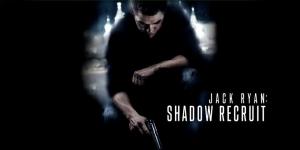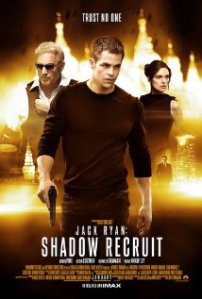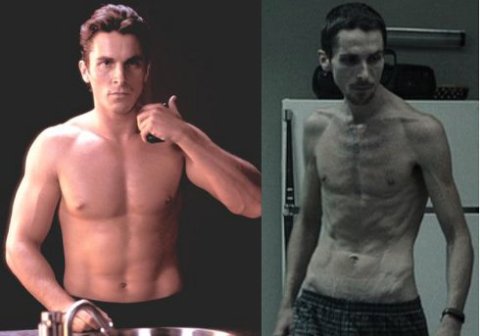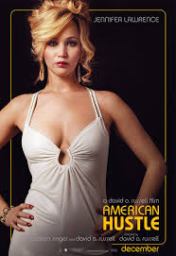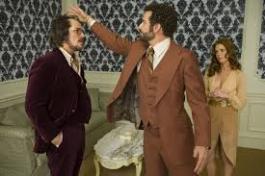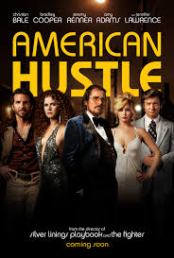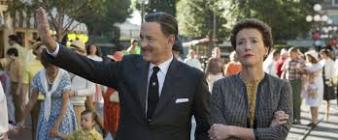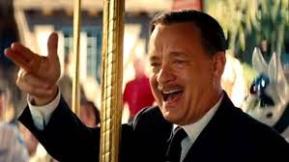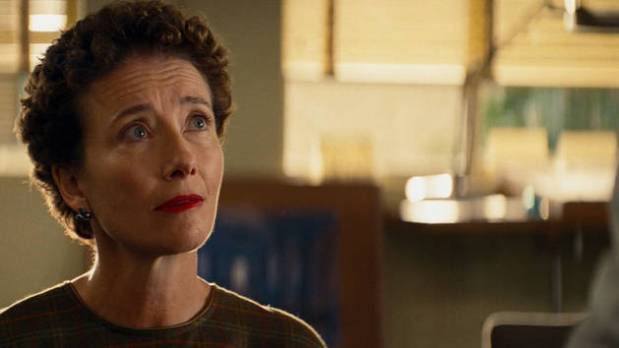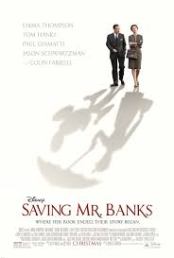I had high hopes for this movie. I’ve always liked Chris Pine’s movies (even his role in Princess Diaries 2), and Keira Knightley was brilliant in Pride and Prejudice. Not to mention I have read a few pages from a Jack Ryan book, and the story and action seemed competent enough. Even the trailer for the movie was good. But, every expectation I had was dashed, and I regret watching it instead of any other movie.
Okay, let me start by pasting the summary of the movie.
Jack Ryan, as a young covert CIA analyst, uncovers a Russian plot to crash the U.S. economy with a terrorist attack.
I don’t recall the plot well enough, but I can tell you about the beginning.
Jack Ryan: Shadow Recruit starts off with Chris Pine at the London School of Economics. He notices a lot of his classmates are rushing off somewhere, and he follows them to see that they’re all transfixed on a television. Scenes of 9/11 play on the screen. I think it was when Homeland was released around 2010-2011 that a signal was released to everyone that it’s okay to talk about 9/11 in movies. I think that’s fine enough, but I don’t particularly like it when movies actually show real footage. Or evoke imagery from the tragic incident. Chris Pine’s previous movie, Star Trek Into Darkness, evoked some of those same images, and another example would be Ender’s Game. (Starting to see a pattern with science fiction movies…)
It cuts to 18 months later, and Jack Ryan is now a lieutenant in the marines. He’s on a helicopter, and it’s at this time that I began to worry. The camera shakes all over, it’s unfocused for several seconds, and it’s put in such close proximity of the characters’ faces that I could actually count the number of pores they had on their face. (If I had a notepad, I would’ve listed the number, but I’ve since forgotten the exact amount.)
However, I cut it some slack. After all, they were on a helicopter. It was realistic, I guess, and I had some experience with that type of style being done well. (Hurt Locker. I don’t love the movie, but even I have to admit that the director used that style perfectly.)
Jack Ryan unbuckles his seatbelt to help a newbie with his, and it’s at that moment that an RPG hits the helicopter. It’s here that my hopes started to dim. The helicopter is crashing, and the camera starts to move all over the place. It was dizzying, but once again, I cut it some slack. I just told myself that the director really wanted this scene to be authentic.
Chris Pine is rushed to a field hospital, and we find out that he’s lost feeling in his legs. He screams in pain, and in the next scene, he’s attempting to walk with crutches. It’s here that we’re introduced to Keira Knightley who plays Cathy Muller. She’s a third year med student tasked with helping him recover. The camera isn’t as jerky in these scenes as it was on the helicopter, but it’s still put within inches of each actor’s face. Keira Knightley and Chris Pine are attractive people, but I don’t think anyone can look good that way. (Especially when you’re watching them on a thirty foot screen. If I didn’t already know the plot, I’d think it was a horror movie.)
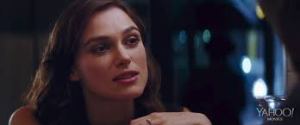
That’s the farthest you can expect to see their faces. The director probably regrets filming them from so far away.
Let’s fast forward, shall we? Jack Ryan is recruited by an enigmatic C.I.A. Operative portrayed by Kevin Costner to become an analyst for them. He goes undercover in Wall Street, and they meet in movie theaters that show old movies. Kind of like how in the Departed, Damon and Nicholson meet at a porn theater. It’s here that the movie shows its cheekiness. The director seems to like the contrast of the old, classical style of movies with his own style. Aside from this scene, Keira Knightley is seen watching an old movie on the television. (A shot which is mimicked later on in the movie.) I thought this was a nice touch, and my hopes began to swell again. They were once again dashed when the writer portrayed Cathy Muller so terribly. In the movie, Cathy Muller confronts Jack Ryan about hiding things from her, and she demands to know if he’s having an affair. She stomps away, and Jack Ryan says: “Let’s go to Paris.”
Then all is well.
I mean, I don’t know about you, but that doesn’t really paint her in the best light. She knows he’s lying, and she forgives him just like that for a trip to Paris? Admittedly, it’s understandable, but she could’ve looked a little conflicted about it, at least. Oh, and let’s talk about Keira Knightley’s performance. Cathy Muller is American, and Keira Knightley is British. So, her accent for this movie was crucial. And… It’s all right. It does waver here and there when she raises her voice, but it’s passable. The accent is believable enough, but it does have an unfortunate side effect of lowering her acting ability. She was great in Pride and Prejudice, and even though I didn’t like her character in the Pirates and the Caribbean movies, she was good there as well. Forced to do a foreign accent, however, it’s obvious that she’s struggling.
It’s perfectly reasonable why she can’t act to the full extent of her ability. It’s a lot of hard work! I couldn’t help but think that her average acting in this movie is the fault of the movie. I feel like she noticed, halfway into the movie, that it wasn’t good. And she just didn’t feel like working that hard for a below average movie. I can understand Tom Hanks and Colin Farrell, I guess, working on their accents for months for Saving Mr. Banks, but I probably wouldn’t have tried so hard for a movie like Jack Ryan: Shadow Recruit.
Let’s talk about the fight scenes. I hate shaky cam. Yes, it’s realistic. Real life fights are shaky, unfocused, and messy. But movies aren’t about being realistic. Sure, I like the plots and characters to be realistic. But movies are about elevating reality. Here’s a good example. In Oldboy, there’s a scene where the main character goes down a corridor, and fights over a dozen assailants. The camera only shows it from one angle, and it moves slowly down the corridor while he disposes of the nuisances. It’s calm and precise and rather elegant. It made the fight all the more brutal because you could see everything clearly. It was horrific and brilliant.
In the fight scenes in this movie, the camera actually isn’t pointed at the characters for certain seconds! I’m not kidding. In the last fight scene of the movie, the camera is focused on the background, leaving the characters in the foreground unfocused. And when they moved, it took a few seconds for the camera to follow them.
It’s ridiculous. It’s hard to take a movie seriously that looks like a home movie I made when I was thirteen and was too lazy to stop recording when walking. (At least with that, the ground and footage of my feet walking was in focus.)
The villain… Oh, I need to talk about the villain. Kenneth Branagh portrays Viktor Cherevin. I could tell you his occupation, but to be honest, his occupation is to be a villain. That’s what the movie shows you, and don’t expect anything more from him than that.
In the first scene we see him, the camera is looking at him from behind. We see an elegant European room while classical music plays loudly in the background. A large bodyguard stands at the other end of the room, and a man is poking a syringe into the arm of the villain. He obviously misses the vein or something like that, and the villain beats him for it. The sounds they used for his punches and kicks sound like something you’d expect if you kicked a pillowcase with a basketball in it. It’s completely fake, and boring.
In another scene, he’s at a Church lighting a candle while a choir sings, and it is so cheesy that I actually laughed. At the end of the day, the plot isn’t important. In my previous reviews, I told you a little bit about the plot, but to be honest, I can’t even remember the plot of this movie. It’s about Russia being the bad guys. Again. It’s about Chris Pine saving the day, and about the director trying to give you a headache. (He succeeded!)
The one thing I thought was interesting is that they managed to sneak in an F-word. It’s PG-13, I believe, and I think it’s because when the guys in charge of censorship looked at the movie, they realized that you can’t see any of the violence. “Okay, since you can’t see any of the fight scenes, you can have one F-word. Use it well.”
I wish so badly that I just watched Wolf of Wall Street. But unfortunately the showing wasn’t till the day after, and like I said, I did think that this was going to be a good movie. If this movie gets a sequel, which I hope it doesn’t, I will not watch it.
On the bright side, I was on a Lazy Boy at the theater where I watched the movie. That’s the high note of the entire film for me.
2 out of 6.
~Jian
